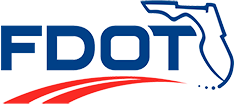449851-1 SR 70 from Lonesome Island Road to Southern Leg of CR 721
Project Details
Estimated Costs
| Construction Cost: | $TBD |
|---|
About
The Florida Department of Transportation is conducting a Project Development and Environment (PD&E) study for proposed improvements to the State Road (SR) 70 corridor in Highlands County. The intent is to provide additional roadway capacity and enhance safety along the SR 70 corridor, a major east-west roadway spanning the state. The project limits extend approximately 7.6 miles from Lonesome Island Road to the southern leg of County Road (CR) 721 in Highlands County.
The purpose of the study is to select a preferred alternative that will be advanced to the design phase. Throughout the process, FDOT will consider a “no-build” option which assumes no improvements to SR 70 other than routine maintenance. If the study results in the selection of a “build” alternative, the project can proceed to the design phase, for preparation of construction plans. You are encouraged to participate in the SR 70 PD&E Study. As the study progresses, we will provide the input we receive from the community to develop and refine alternatives. We invite your questions and comments about this project at any time during the study, by using the Send a Comment button.
Public Involvement
FDOT held an ALTERNATIVES WORKSHOP, with a live in person event on June 13, 2024, and a virtual online event on June 20, 2024. Materials were also available for review and comment below from June 6, 2024. Comments for the workshop were accepted in multiple ways through July 5, 2024. To view what was presented at the workshop, see the Project Documents section below.
FAQs
What is a PD&E Study?
A Project Development and Environment (PD&E) Study is a phase of the Florida Department of Transportation's (FDOT) project development process. A PD&E Study assists the FDOT in determining the location, conceptual design and social, economic and environmental effects of proposed roadway and other project improvements. The process follows procedures set forth in the National Environmental Policy Act of 1969 and federal and state laws and regulations. During the PD&E Study process, feasible alternatives are developed for improvement projects. These ‘Build’ alternatives are evaluated based on environmental, engineering and socioeconomic conditions, safety needs and public input. The need for additional right-of-way for improvements or stormwater will also be evaluated during the PD&E Study phase. The ‘No-Build’ alternative is evaluated throughout the study process. This ‘No-Build’ alternative leaves the existing transportation infrastructure as it is, with only routine maintenance as required for existing facilities. If the study results in a ‘Build’ alternative being selected, the project may proceed to the next phase, which is the design phase. The basic activities of a PD&E Study include:
Data Collection
The first major work effort is the collection of all available data pertaining to the study corridor including existing and planned infrastructure, existing and future land uses, drainage patterns, and environmental resources.
Alternatives Development and Analysis
Once data collection is completed, the Department develops and evaluates various alignment alternatives, including a ‘No-Build’ alternative. The ‘No-Build’ alternative assumes no improvements. The environmental impacts, social impacts and costs of these alternatives are quantified and summarized in an evaluation matrix.
Public Kickoff Newsletter
A public kickoff newsletter will be mailed, to introduce the project to the public and provide an opportunity to view and comment on the project’s need and objectives.
Alternatives Public Meeting
Combining the public input with the needs of the corridor, several improvement alternatives are developed and evaluated along with the “No-Build” alternative during the PD&E Study. This meeting presents the environmental and social impacts as well as estimated costs of the viable ‘Build’ alternatives as compared to the ‘No-Build’ alternative. The public is provided with an opportunity to view and comment on the alternatives under consideration.
Public Hearing
After all public comments are reviewed and the analysis of the alternatives has been refined, a formal public hearing is held to provide a forum for input from property owners and interested parties on the final recommendations. A final decision is not made until after the public hearing.
Final Acceptance
After the comments from the public hearing have been received, considered and addressed, the project reports will be finalized and submitted to the OEM for Location and Design Concept Acceptance. Once acceptance is granted, the PD&E Study phase of the project will be complete. The phases that follow the PD&E Study are design of the project, acquisition of right-of-way, if necessary, and construction of the improvements.
Contact Information
| Communications Team |
|---|
|
Kathern (Kathy) Cothern
(863) 519-2331
kathern.cothern@dot.state.fl.us
|
| For Media Inquiries Only |
|
fdot-d1comm@dot.state.fl.us
|
